PERU
History

History

Cities in PERU
| Lima |
History
Prehistory
Pre-Columbian cultures arose in Peru from 10,000 years before the beginning of our era. The remains of this can be found in the coastal strip, the Andes mountains and in the Amazon region. On the other hand, there are still many uncertainties about the most recent pre-Columbian cultures.
The first inhabitants of the entire continent of America most probably crossed a narrow ice bridge from Asia to North America at the end of the last ice age, about 12,000 years ago.
In a few centuries these nomadic tribes have migrated from north to south, to Tierra del Fuego in the very south of South America. Another theory is that these people did not sail by land, but by sea, along the coasts of North and South America. Finds in various places in North and South America, suggest that people lived there much earlier. Finds in Brazil date back to more than 40,000 years ago.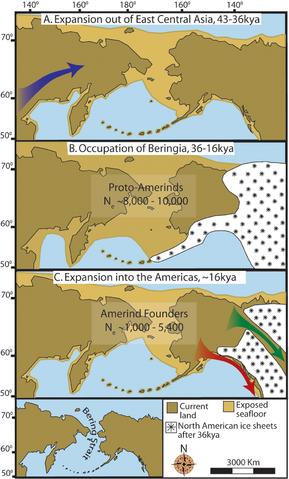 Maps depicting each phase of the three-step colonization model for the peopling of the AmericasPhoto: Buzzzsherman CC 3.0 Unported no changes made
Maps depicting each phase of the three-step colonization model for the peopling of the AmericasPhoto: Buzzzsherman CC 3.0 Unported no changes made
Traces in Peru, especially in the Andean region, date back at least about 10,000 years ago. They have been found around Ayacucho and Lake Titicaca. They were hunters and gatherers who lived in caves, where they left drawings on the rock walls and stone utensils.
Around 6000 BC. the first settlements were built and forms of agriculture and animal husbandry began. For example, the wild guanaco was tamed, which later resulted in the llama and the alpaca.
Around 3000 BC. The first large buildings were erected along the northern coast and in the mountains and the first forms of social organization arose. Due to the introduction of irrigation techniques, more and more people moved inland to build a life there. Due to the breeding of maize, the communities grew bigger and bigger.
Different Indian cultures
An important source of information about pre-Columbian cultures is the ceramics, which date from around 1800 BC, and from 1500 BC. was used throughout Peru. There are images of gods and other mythical figures, but also scenes from daily life can be found on this pottery. Furthermore, large differences can be observed in the shape: in the north people often made pottery with flat bottoms in the shape of animals or people, in the south the pottery had round bottoms, often with two spouts.
The Chavín culture (1400-400 BC) was the first major society in Peru, with great achievements in architecture and sculpture. They also ensured that maize could be cultivated to a great height. The Chavín de Huántar temple was the religious center during this period. Around 400 BC. this culture disappeared, but a number of ruins can still be admired.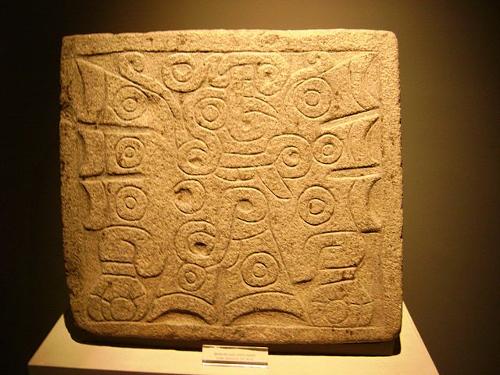 Artefact Chavin-culture, PeruPhoto: Dtarazona CC 3.0 Unported no changes made
Artefact Chavin-culture, PeruPhoto: Dtarazona CC 3.0 Unported no changes made
The Paracas culture (800-100 BC) originated in the desert region on the south coast of Peru, and expanded after 200 BC. out to the valleys of the Piso and the Chincha. They built small villages and lived mainly from agriculture. Noteworthy in this culture was the deliberate skull deformation in newborns and skull repanations were also used. Many mummies of this culture have been found and these people were unsurpassed in the field of weaving.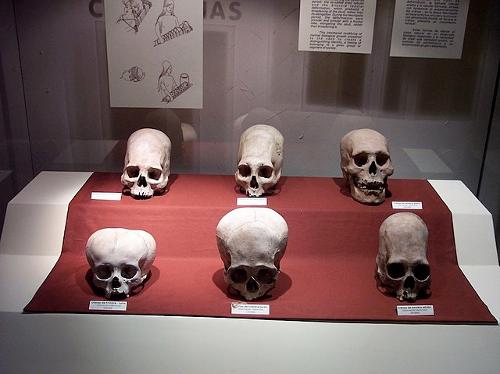 Skulls of the Paracas culture from the Andes. They illustrate the flattening of the head, as was common among the elite of this culturePhoto: Robrrb at English Wikipedia CC 3.0 Unported no changes made
Skulls of the Paracas culture from the Andes. They illustrate the flattening of the head, as was common among the elite of this culturePhoto: Robrrb at English Wikipedia CC 3.0 Unported no changes made
After 100 BC. this culture disappeared and was succeeded in about the same area by the Nazca culture (100 BC-600 AD). The Nazca lived on the edge of the desert and built houses, temples and cemeteries. They irrigated the land and grew corn, of course, along with cassava and lima beans. The most beautiful earthenware objects were made in this period by the Nazca potters. A special phenomenon are the so-called Nazca lines, geoglyphs of hundreds of meters that were made in the desert floor and depict animals and plants. They are probably an astronomical calendar, but they are also attributed to alien visitors. The last period of the Nazca is characterized by the transition to the Wari culture.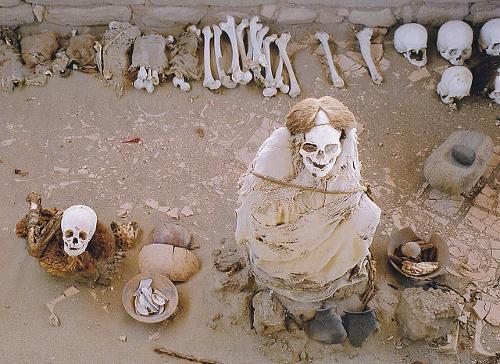 Nazca culture mummies and skulls cemetry in PeruPhoto: Peter van der Sluijs CC 3.0 Unported no changes made
Nazca culture mummies and skulls cemetry in PeruPhoto: Peter van der Sluijs CC 3.0 Unported no changes made
At the same time as the Nazca culture, the Moche culture (100 BC-700 AD) also existed all along the north coast of Peru. The Moche were also artists in the field of ceramics. They were the first to use molds, dies and stamps, resulting in somewhat industrial production. They were also masters of gold processing and developed a technique of making drawings on a white background.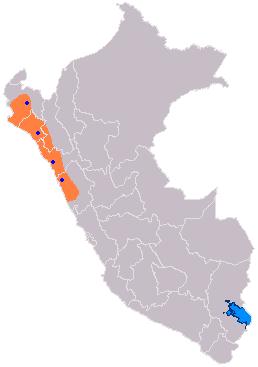 Habitat Moche-culture, PeruPhoto: Joel Takv CC 3.0 Unported no changes made
Habitat Moche-culture, PeruPhoto: Joel Takv CC 3.0 Unported no changes made
The great Tiwanaku culture emerged on the southern shores of Lake Titicaca. The Tiwanaku were farmers who used advanced techniques, but also built an extensive trade network. In a number of ways there is a clear affinity with the Chavin and Nasca culture. The Tiwanaku used building techniques that were later adopted by the Kolla and Inca culture.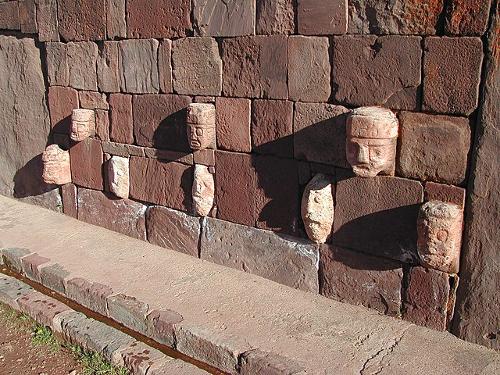 Tiwanaku: spiritual and political center of the Tiwanaku culture in PeruPhoto: Francesco Bandarin CC 3.0 IGO no changes made
Tiwanaku: spiritual and political center of the Tiwanaku culture in PeruPhoto: Francesco Bandarin CC 3.0 IGO no changes made
The Wari (500-900) established the First Empire, subjugating almost all existing cultures in the mountain regions and on the coast. Clearly, they were a belligerent people who were not very cultured and copied many styles and knowledge from other peoples. Bronze was discovered and used for the first time by the Wari.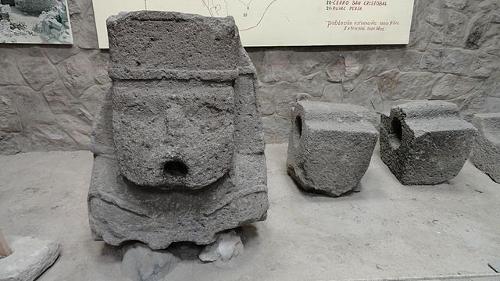 Monolith of the Wari culture, PeruPhoto: Fer121 CC 3.0 Unported no changes made
Monolith of the Wari culture, PeruPhoto: Fer121 CC 3.0 Unported no changes made
The Chimú culture (1000-1480) developed in the same area where the Moche culture once thrived. Important was the royal city of Chan Chan, then the largest city in the world with about 30,000 inhabitants. They enlarged the pyramids built by the Moche and also adopted much of the Moche and Wari traditions. Because ceramic art had become too common, this people indulged themselves more in goldsmithing. Much of the gold treasures stolen by the Spaniards from the Incas belonged to the Chimú. They conquered Lambayeque in the north and Chancay in the south, but were themselves defeated by the Incas led by Tupac Yupanqui in the late 15th century.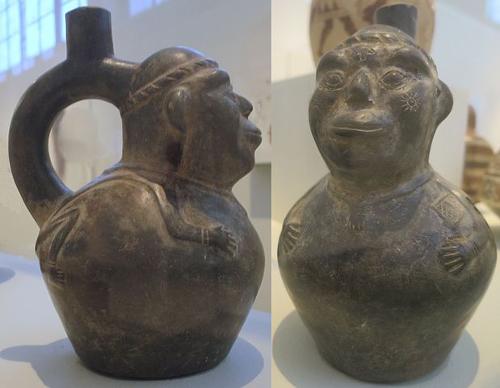 Stirrup-spout vessel, Chimú culture, Peru, late 15th-early 16th centuryPhoto: Hiart in the public domain
Stirrup-spout vessel, Chimú culture, Peru, late 15th-early 16th centuryPhoto: Hiart in the public domain
South of the Chimú Empire, the Chancay culture (1000-1400) arose, and the Ica culture (900-1550) flourished in the Nazca area. The Ica culture, which also produced high-quality pottery, was incorporated by the Incas in 1470.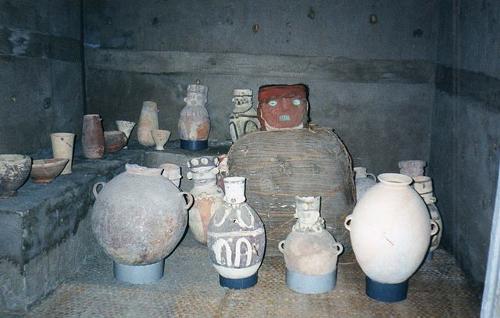 Chancay culture artifacts at the museum, El Castillo, Chancay, PeruPhoto: Haroldarmitage CC 3.0 Unported no changes made
Chancay culture artifacts at the museum, El Castillo, Chancay, PeruPhoto: Haroldarmitage CC 3.0 Unported no changes made
The Kuelap, who were hunted by the Wari and later by the Incas, retreated to remote mountain areas and made a living from agriculture. Initially, they also built very large defenses, such as the Keulap Fort in the mountains northeast of Cajamarca.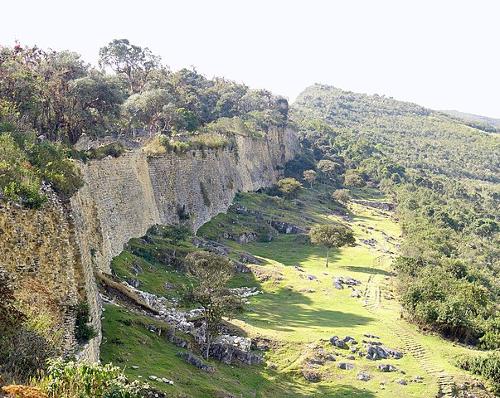 Eastern facade of the wall surrounding Kuelap fortress, PeruPhoto: Martin St-Amant (S23678) CC 3.0 Unported no changes made
Eastern facade of the wall surrounding Kuelap fortress, PeruPhoto: Martin St-Amant (S23678) CC 3.0 Unported no changes made
The Qulla (900-1300) lived west of Lake Titicaca and were farmers, but fiercely opposed the armies of the Incas. The Kollas were also renowned stone workers, who, among other things, built impressive tombs.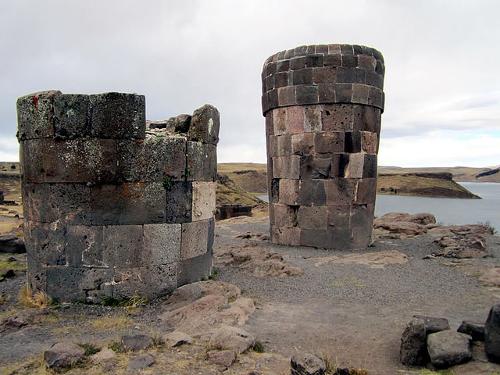 Pre-Hispanic funeral towers overlooking Lake Umayo at the Sillustani Archaeological Site northwest of Puno, PeruPhoto: David Stanley from Nanaimo, Canada CC 2.0 Generic no changes made
Pre-Hispanic funeral towers overlooking Lake Umayo at the Sillustani Archaeological Site northwest of Puno, PeruPhoto: David Stanley from Nanaimo, Canada CC 2.0 Generic no changes made
The Inca Empire
From the capital Cusco in Peru Bolivia, among others, came under the rule of the Incas (1200-1500 AD). The language of the Incas, Quechua, had to be spoken by every subject and is still one of the official languages of Peru today. The Inca Empire was divided into four areas of which Collasuyo included a large part of Peru, all of Chile, some northern Argentina and present-day Bolivia.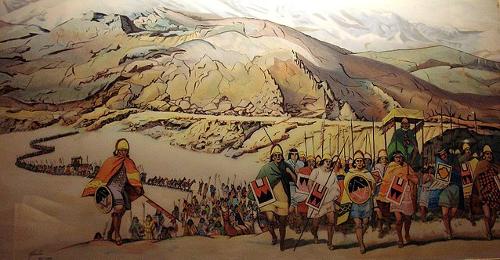 Inca army, PeruPhoto: Miguel Vera León from Santiago, Chile CC 2.0 Generic no changes made
Inca army, PeruPhoto: Miguel Vera León from Santiago, Chile CC 2.0 Generic no changes made
The Incas built roads and aqueducts, terraces, fortresses and temples. Large cities also sprang up in the plains. Ultimately, as many as 43 different peoples would be subjugated by the Incas. Around 1520, the Inca Empire slowly crumbled due to, among other things, internal conflicts and the arrival of the Europeans. All in all, the peak of Inca culture had lasted less than a hundred years.
The arrival of the Europeans
In 1492 Christopher Columbus discovered a number of islands in the Caribbean and named the islanders Indians. After all, he thought he had sailed a short route to Southeast Asia and arrived in India. At the beginning of the 16th century it was soon discovered that a whole "New world" had been discovered. It was the explorer Amerigo Vespucci who sailed along the east coast of the American continent and thus discovered Argentina and Tierra del Fuego. Some years earlier, the world to be discovered had been divided into two parts by Pope Alexander VI. With a view to the evangelization of all foreign peoples, the Spaniards were ordered to occupy all areas west of the Cape Verde meridian; the Portuguese to the east of it.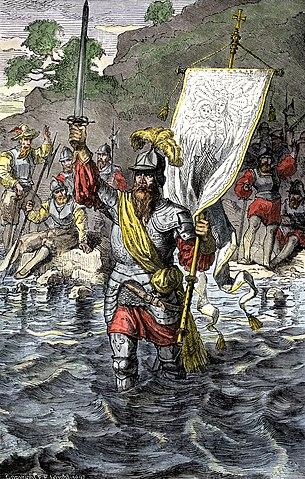 Vasco Nuñez de Balboa, PeruPhoto: F.E.Wright CC 4.0 International no changes made
Vasco Nuñez de Balboa, PeruPhoto: F.E.Wright CC 4.0 International no changes made
The Pacific Ocean was discovered in 1513 by the Spaniard Vasco Nuñez de Balboa. He did this by crossing the Isthmus of Panama. Later he was also the first to see the Peruvian coast, but did not go ashore yet. In the first half of the 16th century, the Spaniards took control of almost the entire Caribbean and from there many expeditions were held that led to large parts of Central and South America being conquered. This conquest, begun by Hernán Cortez, was called the "conquista" and the people who took part in it the conquistadors.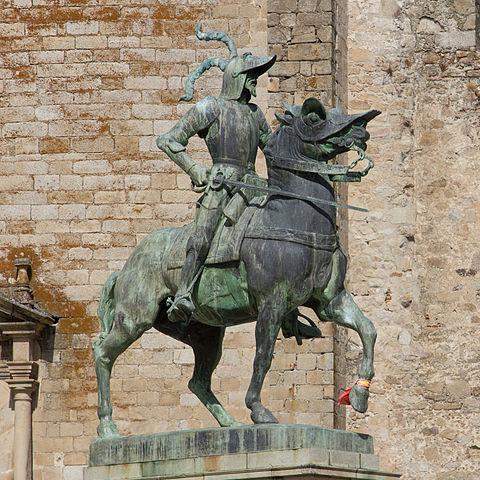 Equestrian statue of Francisco Pizarro in Trujillo, Cáceres, SpainPhoto: Carlos Delgado CC 3.0 Spain no changes made
Equestrian statue of Francisco Pizarro in Trujillo, Cáceres, SpainPhoto: Carlos Delgado CC 3.0 Spain no changes made
The first conquistador to enter Peruvian territory was Francisco Pizarro, in 1525 at Tumbes, in northern Peru. Initially it remained that, despite the fact that it was told about the mighty Inca empire where there was much to be gained for the Spaniards. Only a few years later did he receive permission to return to Peru, now accompanied by a considerable army. At that time, a battle was already raging between the two king's sons Atahualpa and Huascar, among whom the Inca Empire was divided. Despite the fact that the Inca Empire was already in a state of disrepair, Pizarro and his co-captain Diego de Almagro needed a ruse to defeat the Inca. The Spaniards were invited as "friends" by the Inca king Atahualpa, but once there they unexpectedly launched the attack and captured the king. Six months later Atahualpa was killed by the Spaniards.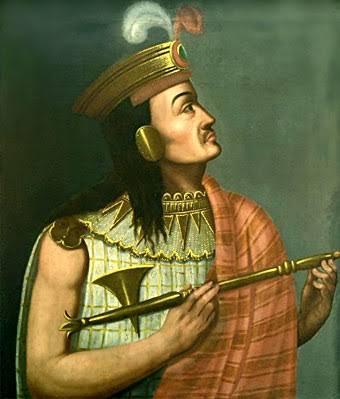 Atahualpa was the 13th ruler of the Inca Empire, PeruPhoto: Carlos Delgado CC 4.0 International no changes made
Atahualpa was the 13th ruler of the Inca Empire, PeruPhoto: Carlos Delgado CC 4.0 International no changes made
They then entered into negotiations with Atahualpa's brother, Manco II. He wanted to succeed Atahualpa and asked the Spaniards for support. He got it, so the Spaniards could go their own way and plunder all the Inca cities, and ship ships full of gold and other valuables to Spain. It will come as no surprise that thousands of Incas lost their lives. Throughout the conquista on the American continents, millions of Indians were killed, not only by acts of war but also by new diseases brought by the Europeans.
In Peru, meanwhile, a power struggle broke out between Pizarro and Almagro, and the Incas led by Manco II were also active and fought for their freedom. In 1538 Almagro was executed by Pizarro and three years later Pizarro himself was murdered by Almagro's followers. In 1548 the new viceroy of Peru arrived in the person of Pedro de la Gasca. He suppressed another revolt of the conquistadors under Pizarro's brother Gonzalo, who was beheaded.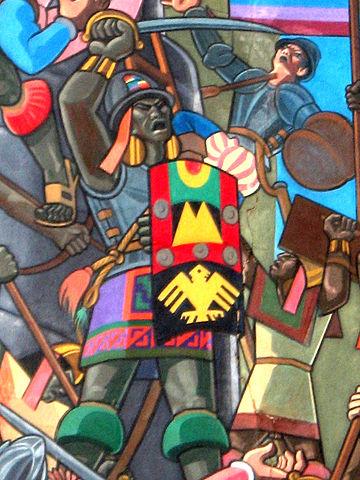 Manco II 'Inca' , PeruPhoto: Juan Bravo CC 3.0 Unported no changes made
Manco II 'Inca' , PeruPhoto: Juan Bravo CC 3.0 Unported no changes made
The Indians were used as slaves by the Spaniards and treated as an inferior race. The system was structured in such a way that every Spaniard who settled in South America automatically had the right to lease a specific area or village, a so-called "encomienda". The Spanish tenants did have the duty to convert Indians to Christianity.
However, as early as 1550, the "Leyes Nuevas" came into force, officially abolishing slavery, at least as far as the Indians are concerned. In reality, the Indians were treated like slaves for centuries, to which the blacks brought from West Africa were added later. Furthermore, the Spaniards tried hard to change the indigenous religions and cultural expressions to Spanish standards. Furthermore, gold and silver artifacts were melted down or shipped to Europe and gold and silver mines were looted. With all these valuables the many Spanish wars were paid for and the economies of the European countries received an enormous boost. Expeditions are still being organized to find supposedly enormous gold treasures.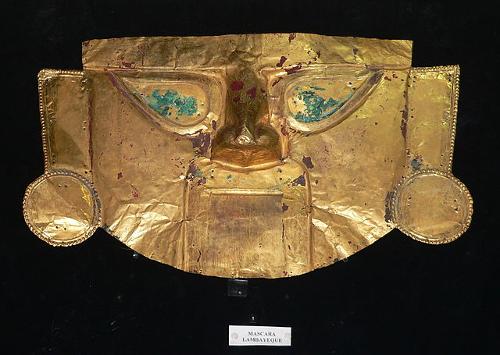 The Lambayeque funerary mask is a characteristic piece of Lambayeque or Sicán art, a pre-Columbian culture that developed in northern PeruPhoto: Manuel González Olaechea y Franco CC 3.0 Unported no changes made
The Lambayeque funerary mask is a characteristic piece of Lambayeque or Sicán art, a pre-Columbian culture that developed in northern PeruPhoto: Manuel González Olaechea y Franco CC 3.0 Unported no changes made
Peru independent
In 1739 the vice-kingdom of New Granada (Colombia, Venezuela and Panama) and in 1776 that of Río de la Plata (Argentina, Uruguay, Paraguay) was separated from the vice-kingdom of Peru.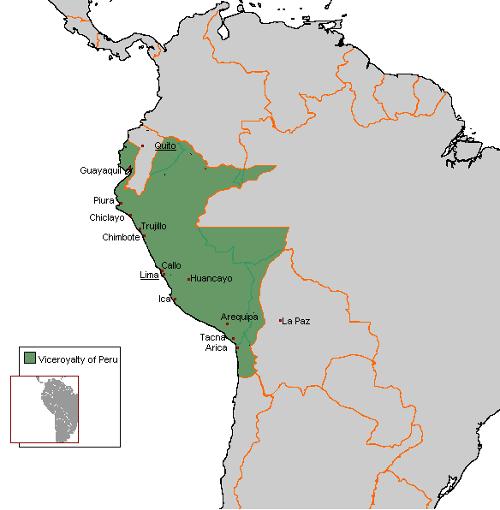 Map of Viceroyalty PeruPhoto: Arab Hafez at English Wikipedia CC 3.0 Unported no changes made
Map of Viceroyalty PeruPhoto: Arab Hafez at English Wikipedia CC 3.0 Unported no changes made
At the end of the 18th century, another major revolt against the Spaniards broke out. This revolt was led by Tupac Amarú II, whose proper name was José Gabriel Condorcanqui. He was a descendant of the Incas who also got a lot of the Creoles and the Mestizos behind him, because like all of Spanish America Peru too suffered greatly from the monopoly of trade and industry of the motherland.
At first he was on the winning side, but eventually the Spaniards managed to defeat him and in 1781 he was barbarically executed along with the other rebel leaders; Tupac Amarú's tongue was cut out, among other things.
The struggle for independence in the United States was closely followed by the upper classes in the South American colonies. When the United States did indeed break away from England, it was the signal for the South American freedom fighters to take action. Meanwhile, it was important that Spain's position in Europe was becoming less and less important.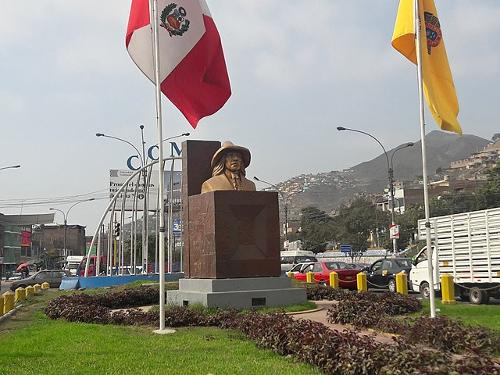 Statue Tupac Amaru II, PeruPhoto: Fmurillo26 CC 3.0 Unportedno changes made
Statue Tupac Amaru II, PeruPhoto: Fmurillo26 CC 3.0 Unportedno changes made
In 1805 the Spanish fleet was completely destroyed at the Battle of Trafalgar and in 1808 the Spanish King Charles IV was forced to resign by Napoleon. In 1812 Spain became a parliamentary democracy, which was changed again in 1814 by the absolutist Spanish King Ferdinand VII. In short, Spain, once the most powerful country in the world, was rapidly losing its leadership position. A landing of revolutionaries from Argentina and Chile under José de San Martín (1820) finally made the declaration of independence possible (July 28, 1821).
This was followed by a battle with the Spaniards, who had withdrawn to the south. Only after the help provided by Simón Bolívar could independence be confirmed; in 1824 the Spaniards were defeated at Ayacucho.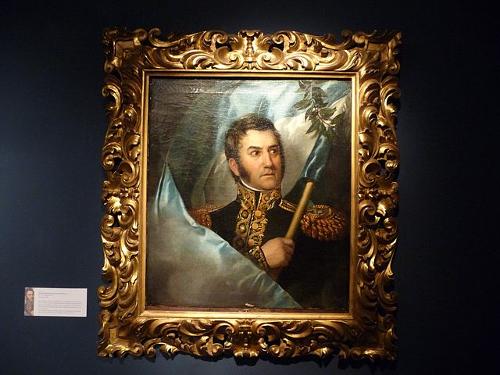 José de San Martín was a Spanish-Argentine general and the principal southern leader of the South American independence strugglePhoto: Bastique from San Francisco, United States CC 2.0 Generic no changes made
José de San Martín was a Spanish-Argentine general and the principal southern leader of the South American independence strugglePhoto: Bastique from San Francisco, United States CC 2.0 Generic no changes made
The Spanish royalists did not surrender without a fight and fled into the mountains to fight against the insurgents from there. This battle lasted until 1826, but after that it was over with the Spanish in Peru.
Bolívar had big plans and wanted to make all of South America one big independent state. However, this endeavor had little chance because the differences between the individual areas were far too great for that. Initially he managed to forge a 'Greater Colombia', but secession movements soon sprang up everywhere and in 1827 Peru broke away from this construction and became definitively independent.
The Republic of Peru
The situation remained virtually the same for the peasants and workers: poverty remained. In fact, Peru remained in the hands of a few powerful families. At that time, exports consisted of, among other things, silver, sugar, oil, coffee, cotton, rubber (since around 1850) and guano, a valuable bird fertilizer. The money that was earned with this went largely to the owners of the lands and foreign investors from England and the United States in particular. In 1864, one of the Peruvian guano islands was occupied by the Spanish and war broke out as a result. Peru received help from Chile, Ecuador and Bolivia, and the Spanish were defeated in 1866. In 1879 Spain finally recognized the independent status of the republic of Peru.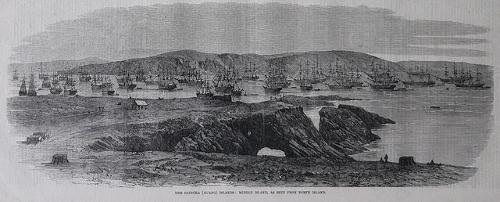 View on Chincha, a Guano-island of PeruPhoto: Manuel González Olaechea y Franco CC 3.0 Unported no changes made
View on Chincha, a Guano-island of PeruPhoto: Manuel González Olaechea y Franco CC 3.0 Unported no changes made
After this, the republics of Peru and Bolivia briefly opted for joint administration, but eventually split again into two separate republics. The boundaries were then drawn in such a way that Bolivia was assigned the Atamaca Desert with the port city of Antofogasta, a large part of present-day Chile. Chile invaded the coastal strip in 1879 and occupied the desert, where there was much precious salt available for the taking. In the so-called Nitric War or "Guerra del Pacifico", Peru got help from Bolivia. Sea battles were held, bombardments were carried out and tens of thousands of soldiers were also killed by trench warfare. Peru and Bolivia suffered a terrible defeat and had to pay for it politically.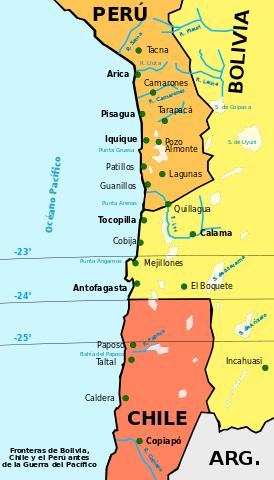 Borders of Bolivia, Chile and Peru before the Pacific WarPhoto: Haylli (assumed CC 3.0 Unported no changes made
Borders of Bolivia, Chile and Peru before the Pacific WarPhoto: Haylli (assumed CC 3.0 Unported no changes made
In 1883 a pact was agreed with Chile whereby Peru had to cede the southern provinces of Tarapacá and Arica to Chile. The war also had disastrous consequences for the economy because in 1890 Peru was in fact declared bankrupt and the country actually came under the control of foreign companies, which managed the ports, rail traffic and the lucrative excavation of guano. Working conditions, especially in rural areas, did not improve either, and people lived in isolation and poverty.
In the late 19th and early 20th centuries, the military dictatorships of General Nicolás de Piérola Villena and the presidents Manuel Pardo (first civilian president) and Augusto Leguía y Salcedo succeeded each other in rapid succession. The economy recovered somewhat in the period up to the First World War, but the external debt increased tenfold.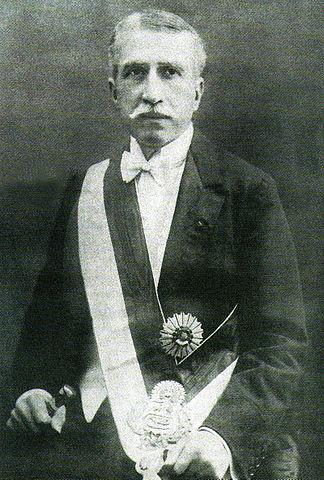 Augusto Bernardino Leguía y Salcedo was a Peruvian politician and twice PresidentPhoto: Fernando murillo gallegos CC 3.0 Unported no changes made
Augusto Bernardino Leguía y Salcedo was a Peruvian politician and twice PresidentPhoto: Fernando murillo gallegos CC 3.0 Unported no changes made
Interwar period
After World War I, North American companies also invested in the copper and zinc industries, but even now the revenues went to a small elite. This met with much discontent among the workers and disaffected workers of sugar cane plantations near Trujillo founded the first workers' movement, the Alianza Popular Revolucionario Americana (APRA) in 1924. This movement was led by Haya de la Torre. A communist party, the PCP, was also founded. In 1933, a workers' revolt was crushed by the then dictator Luis Miguel Sánchez Cerro. His successor Óscar R. Benavides (1933-1939) restored powerful authority and quite successfully steered his country through the worldwide depression of the 1930s, which also affected Peru.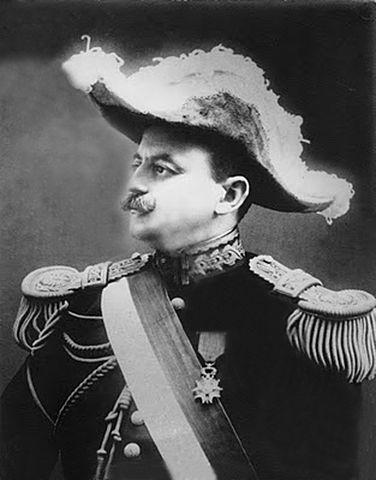 Óscar Raymundo Benavides Larrea President of PeruPhoto: Fernando murillo gallegos CC 3.0 Unported no changes made
Óscar Raymundo Benavides Larrea President of PeruPhoto: Fernando murillo gallegos CC 3.0 Unported no changes made
Although Peru was not directly involved in the two world wars, war was regularly waged with Ecuador over border disputes and over land. In 1942, Ecuador, enshrined in the Protocol of Rio de Janeiro, lost approximately 42% of its territory. This still causes regular tensions between the two countries, most recently in 1995.
Post-war years
The post-war years were characterized by the comings and goings of democratic governments and dictatorships. Immediately after the Second World War, the elections were won by left-wing and liberal parties. The first head of government after the war became José Luis Bustamante and under his leadership liberal reforms were implemented, such as freedom of the press and the establishment of civil rights in the constitution. Bustamante was deposed by General Manuel Odría in 1948 and educational reforms were implemented under his dictatorial rule.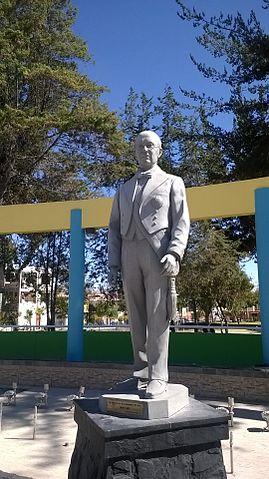 José Luis Bustamante y Rivero, President of Peru from 1945-1948Photo: Montonero86 CC 4.0 International no changes made
José Luis Bustamante y Rivero, President of Peru from 1945-1948Photo: Montonero86 CC 4.0 International no changes made
Under his successor Prado (1956-1962), the economy gradually improved despite high inflation figures. The big cities benefited most from the growing economy, which led to many people moving from rural areas to cities.
The 1962 elections had no winner, but power was claimed by General Ricardo Pío Pérez Godoy, who was succeeded by a military junta after only a year. A few months later, a civilian, Fernando Belaúnde Terry of the Acción Popular (AP) took over the helm.
Military rule 1968-1978
On October 3, 1968, a military coup was staged by General Juan Velasco Alvarado. The first thing he did for the people was to give back the land and nationalize the big companies, including the IPC. He could do this by overriding the constitution, but this created a tense relationship with the Americans. In 1970 the guerrilla movement Shining Path (Sendero Luminoso) was founded, led by Abimael Guzmán. From 1980 onwards this movement became increasingly violent in an effort to bring about the social changes so ardently desired by the population.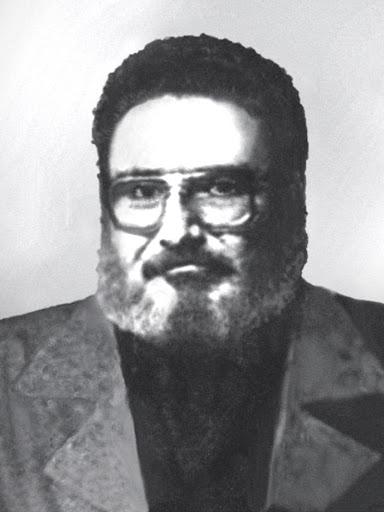 Manuel Rubén Abimael Guzmán Reynoso is the former leader of the Shining Path in PeruPhoto: Altemark CC 2.0 Generic no changes made
Manuel Rubén Abimael Guzmán Reynoso is the former leader of the Shining Path in PeruPhoto: Altemark CC 2.0 Generic no changes made
Important for the economy of Peru was the foundation in Lima of the ANCOM, an economic union of which the Andean countries Venezuela, Bolivia, Colombia and Ecuador also became members.
The next coup took place in 1975, this time by General Francisco Morales Bermudez. The elections he promised and a return to bourgeois democracy were held in 1980, and Belaúnde Terry of the Acción Popular became the new democratically elected president. He was fortunate that the military-backed APRA leader Haya de la Torre died in August 1979.
The economic position remained precarious under Fernando Belaúnde Terry's liberal economic policy, as unemployment and inflation increased rapidly.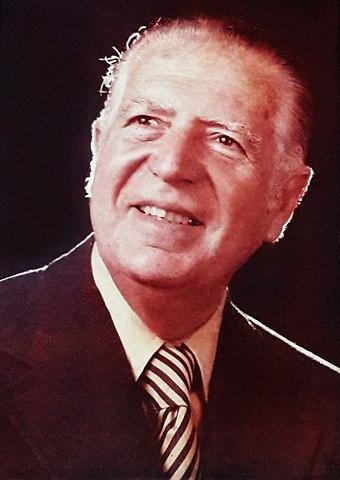 Fernando Belaúnde Terry was a Peruvian politician who twice served as President of PeruPhoto: Nando M. G. CC 2.0 Generic no changes made
Fernando Belaúnde Terry was a Peruvian politician who twice served as President of PeruPhoto: Nando M. G. CC 2.0 Generic no changes made
Civil administration again
In January 1981, the old territorial dispute with Ecuador over part of the Amazon region turned into a brief border war. A more serious threat to political stability was the increase in the illegal cocaine trade and the armed struggle carried out by the Maoist guerrilla movement Sendero Luminoso ('Shining Path') from 1980 onwards. The popular dissatisfaction with President Belaúnde's policies led to a growing support for the APRA and the IU (Izquierda Unida = United Left).
In April 1985, Belaúnde Terry was succeeded by APRA's Alan García Pérez, who had won the election. He quickly became popular with the poor by suspending huge foreign debt and pledging to defeat terrorism. Initially the economy revived, but in 1988 it collapsed completely. He could also not keep his other promises and that ended his great popularity. In 1985 a new guerilla movement was founded, the Movimiento Revolucionario Tupac Amaru (MRTA).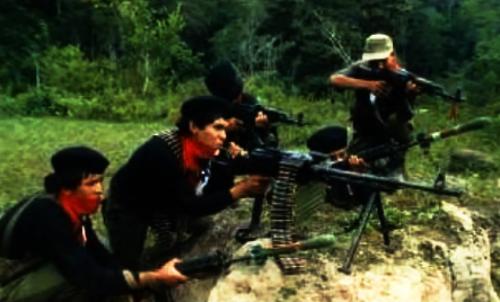 The TúpAmaru was an underground movement in Peru that arose in 1984Photo: Yuyanapaq Lum CC 3.0 Unported no changes made
The TúpAmaru was an underground movement in Peru that arose in 1984Photo: Yuyanapaq Lum CC 3.0 Unported no changes made
This movement was responsible for many terrorist attacks, especially in the big cities. Police and army acted harshly and tens of thousands of victims were killed in the period between 1980 and 1992. In 1988, the situation was exacerbated by right-wing death squads who carried out one assassination attempt after another, after which García Peréz resigned early.
Period Fujimori
The famous writer Mario Vargas Llosa was more or less the mouthpiece of the troubled Peruvians and immediately ran for the right-wing liberal party FREDEMO in the 1990 presidential elections. However, an unexpected winner came out, namely Alberto Fujimori of the new and independent party Cambio '90. He received the support of the APRA and the left-wing parties. Fujimori was a professor and a descendant of Japanese immigrants. However, living conditions continued to deteriorate, causing half of the population, mostly Indians, to be below the absolute poverty line in 1991.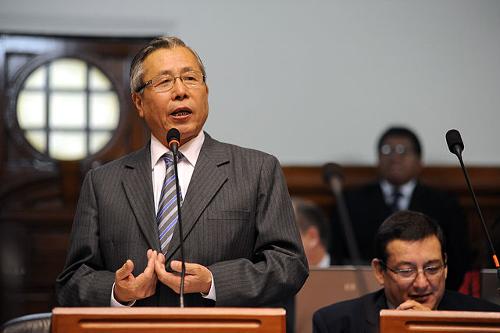 Alberto Ken'ya Fujimori (Lima, 28 July 1938) is President of Peru in the 1990sPhoto: Congreso de la República del Perú CC 2.0 Generic no changes made
Alberto Ken'ya Fujimori (Lima, 28 July 1938) is President of Peru in the 1990sPhoto: Congreso de la República del Perú CC 2.0 Generic no changes made
Fujimori soon took almost all power by dismantling the National Congress and the Chamber of Deputies in 1992. The intention was to reduce corruption and bureaucracy. The economy was boosted somewhat by financial support from Japan and a wave of privatization in which many companies were sold to foreign investors. There was actually a success; inflation had fallen to "only" 15% in 1994. In 1992 the leaders of Sendero Luminoso, Guzmán and Campos, were arrested. They were sentenced to life imprisonment and their organizations practically shut down for the ensuing period. The 1992 parliamentary elections were won by Fujimori's party.
In 1995, Fujimori was re-elected president by a large majority (64% of the votes) and Fujimori's party won an absolute majority in the parliamentary elections. The traditional parties, such as the APRA and the Acción Popular, were not involved.
Fujimori had to deal with the Tupac Amarú Revolutionary Movement (MRTA) in late 1996. In early 1997, urban guerrillas in the residence of the Japanese ambassador held high-ranking officials hostage for four months, demanded to be exchanged for hundreds of captured Tupac Amarú fighters. The Fujimori government refused to comply and elite soldiers relieved the hostages in a lightning strike.
Fujimori's autocratic style of government also claimed several victims in 1997. Three judges of the Constitutional Court were fired for opposing Parliament's interpretation of the Constitution in favor of Fujimori's third term. In 1997, doubts arose about the country of birth of the president. According to the constitution, he must have been born in Peru.
The social contrasts in Peru are poignant and that only worsened under Fujimori. The Indian majority of the population lives in very poor conditions and crime has also increased rapidly. Following the murder of mine owner Luis Hochschild and the kidnapping of his son, on May 12, 1997, parliament granted President Fujimori special powers to tackle organized crime.
At the beginning of 1998, Peru was hit by the climate phenomenon El Niño, especially in the coastal departments. At least 300 people lost their lives from drowning, malaria, yellow fever and pneumonia; 30,000 houses and many roads were destroyed. The government declared a state of emergency in 15 of the 24 departments.
21st century
In late December, President Alberto Fujimori announced his candidacy for the 2000 presidential election, and if he won, he would rule the country for a third consecutive time. However, this was prohibited by constitution and the opposition parties reacted furiously. Under a constitutional amendment introduced by Fujimori during his first term in office, a president may only be re-elected once. Fujimori defended himself by stating that the new Constitution will only apply from his second term in office.
Although Fujimori's popularity waned due to poor economic developments, he continued to have the support of most politicians. Because of his authoritarian style of government and the controversial system of justice, criticism from abroad became increasingly sharper.
On April 9, 2000, the presidential elections were held in which Fujimori, like his rival of Native American descent Alejandro Toledo, surprisingly failed to obtain a majority, necessitating a second round. May 28 was the second round of elections with Fujimori as the sole candidate, as Toledo had withdrawn due to electoral fraud. Fujimori won, of course, but the United States did not recognize the election results. A bribery scandal came to light involving the head of the security forces, as well as Fujimori's side advisor, Vladimiros Montesinos.
This scandal led to the fall of President Fujimori, and after an interim government led by Valentin Paniagua, Alejandro Toledo won the spring 2001 elections. It was a neck-and-neck race with Alan García, but eventually Toledo took the stage. July 28, 2001 as president. The improvements that the Toledo government wants to implement are: reform of the judiciary and of the electoral system, improvement of respect for fundamental rights, freedom of the press and curbing the political influence of intelligence services and armed forces.
In September, the Supreme Court in Peru will issue an international arrest warrant for Fujimori, who is currently in a self-chosen exile in Japan. Since June 2004, Toledo has no longer seen himself supported by a majority in Congress. His party Peru Posible won 45 of the 120 seats and has therefore formed a (occasional) coalition with FIM (Frente Independiente Moralizador). The government appears ineffective and Peru Posible is ravaged by infighting. A number of corruption scandals involving top civil servants have caused his popularity to decline even further. Numerous cabinet changes followed each other and in July 2004 the Presidency of Parliament went to the opposition, with the election of Antero Flores Aráoz, of the PPC. In 2006 he was succeeded by moderate ex-president Alan García of the Partido Aprista Peruano. In December 2007, Fujimori is on trial for abuse of power. He is sentenced to six years in prison. He is appealing, but that was rejected in April 2008.
In July 2009 there have been massive protests from the trade unions against the government's free trade policy. President Garcia appoints a new prime minister, Javier Velasquez Quesquen, and is shifting much of the cabinet in an effort to regain confidence. In January 2010, the court sentenced Fujimori to 25 years in prison.
In July 28, 2011, Ollanta Humala Tasso has been elected President and Prime Minister of Peru. In November 2012, the last artifacts brought back from Machu Picchu by American archaeologist Hiram Bingham are returned as agreed. In June 2013, Florindo Flores, one of the original leaders of the Shining Path, is sentenced to life imprisonment. In January, the sea border between Chile and Peru will be established by the United Nations. In July 2014, Ana Jara becomes the new prime minister, the sixth in a three-year period. In June 2016, Pedro Kuczynsky will become the new president and Fernando Zavala prime minister. Fujimori will be released on medical grounds in December 2017.
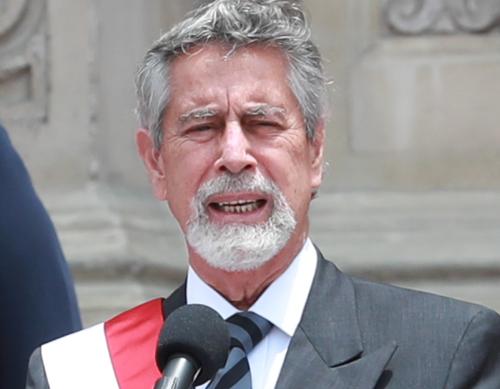 Francisco Sagasti, since 17 november 2020 president of PeruPhoto: Ministerio de Defensa del Perú CC 2.0 Genericno changes made
Francisco Sagasti, since 17 november 2020 president of PeruPhoto: Ministerio de Defensa del Perú CC 2.0 Genericno changes made
Vice-President Vizcarra was sworn in as head of state in March 2018 after the resignation of Pedro Pablo Kuczynski amid allegations of corruption. President Vizcarra is expected to serve out Mr Kuczynski's term, which ends in 2021. A left-wing primary school teacher with no experience of national politics, Pedro Castillo beat conservative candidate Keiko Fujimori in a very close content in 2021..
Sources
Le Grand, J.W. / Peru : mensen, politiek, economie, cultuur
Koninklijk Instituut voor de Tropen : Novib
Luft, A. / Peru
Elmar,
Lyle, G. / Peru
Chelsea House Publishers,
Peru
Cambium,
Peru, Bolivia
Lannoo
Rensink, E. / Peru
Gottmer,
Te gast in Peru
Informatie Verre Reizen
CIA - World Factbook
BBC - Country Profiles
Copyright: Team The World of Info